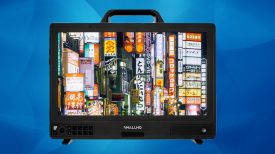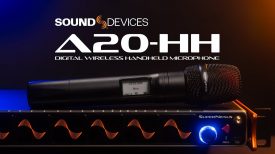By site editor Dan Chung:
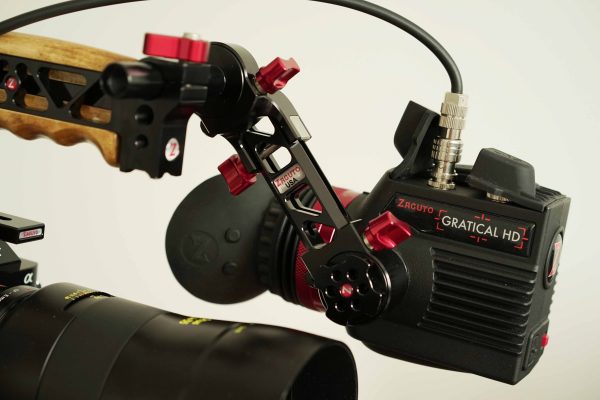
If you spend most of your day staring into the viewfinder of a camera, then the Gratical HD EVF will be of real interest to you. It is a universal EVF with industry standard connections that allow it to be used with a wide range of cameras – from the Sony a7S and Panasonic GH4 all the way to F55 or ARRI’s Alexa. It isn’t for the occasional shooter: priced at nearly $3K it costs more than cameras like the a7S and GH4. The Gratical is for people who need to get sharp shots consistently and whose reputations often depend on it. It suits shooters who buy or use multiple cameras and want to be 100% sure of what the camera is capturing.
I’ve now had several weeks of testing and shooting with a late pre-production Gratical HD and these are my conclusions so far:
So what does it deliver? In short, the Gratical HD provides a wonderfully sharp, clear and bright 1280×1024 image. The display is an OLED which means that colour and contrast are incredibly good. The density of the pixels and the OLED technology mean that there is no visible ‘screen door’ or grid pattern as is commonly seen on cheaper EVFs. You are looking at an lovely, solid image. Of all the EVFs I’ve used, this is the easiest to focus with. On other EVFs I am constantly punching in to pixel-pixel magnification to check focus – with the Gratical HD I feel the need to do this far less.
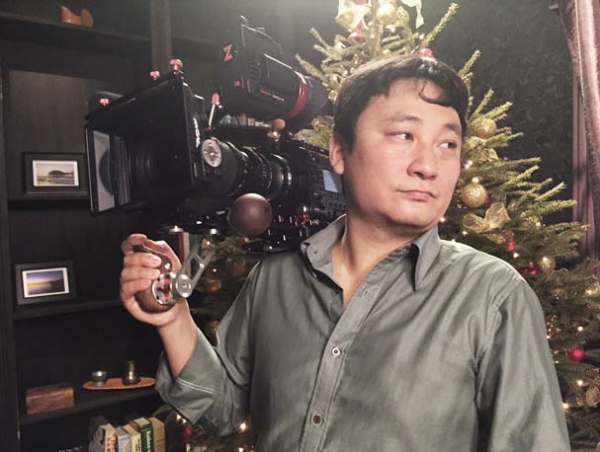
The screen is actually taller than the 720 pixels needed for HD. This is because it is designed to have scopes, waveforms and audio levels displayed below the picture – rather than overlaid over the image like some other EVFs. Whilst the image of the Gratical is really good I still rely on waveforms to get good exposure; having it just below the image at all times gives me extra confidence that all is well while not obscuring my actual picture. The scopes can be turned on or off individually or even moved around. Unlike some other monitors and EVFs, these scopes show no obvious lag.
Along with the scopes there are also audio level meters and then the usual range of visual focus and exposure aids. Peaking, false colour, zebras and one-to-one focus magnification are all there. To get an idea of the Gratical menus you can watch this short video shot through the finder with my iPhone (the noise in the video comes from the iPhone and wasn’t visible to my eye.)
If you are used to an original Zacuto EVF or Z-finders on your DSLR then the image will appear smaller in your field of view with the Gratical – this is not a bad thing and was done on purpose by Zacuto. The advantage is that your eye does not have to scan around to see the whole frame when composing. You might also expect that the smaller image also makes it harder to focus, but in my experience that hasn’t been the case. The images just seem to ‘pop’ in and out more clearly using the Gratical compared to my other finders and EVFs – even without peaking applied.
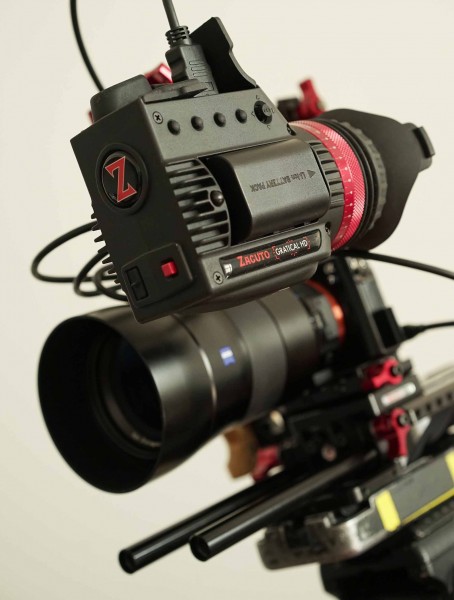
On the side of the Gratical are four buttons and a menu jog dial with a four way pad. This gives a total of eight user assignable keys which can be set to practically any option available in the EVF’s menu. By default the four main buttons offer false colour, peaking, zebras and one-to-one image magnification.
One major advantage of the Gratical HD is the ability to apply a Lookup Table (LUT) so that you can work with an image in the viewfinder that is closer to your finished look – but still record a Log or flat image in-camera. LUTs can be user generated in software like Davinci Resolve, or bought commercially from companies like Visioncolor. The LUTs are loaded via a USB socket on the front of the Gratical and enabling them can be assigned to the buttons on the side of the EVF. This makes switching between looking at the LUT adjusted image and the Log/flat image almost instant. Another bonus is that the waveform and scopes actually show what is happening to the input Log/flat image, not the adjusted one. This makes sense as that is the image you are actually recording.
When I first took the Gratical HD out of the box I was underwhelmed with the image. It was flat and grey. But I soon discovered that the Gratical has a full set of image adjustments which allow you to fine-tune it to your taste. After ten minutes adjusting with some colour bars, the image really sang. To run all the electronic wizardry in the Gratical there is a FPGA processor.
Another key ingredient of a good EVF is that the display image does not have too great a lag time. Some EVFs I have used have a delay of several frames between what the camera ‘sees’ and the image being displayed. This makes following fast-moving subjects very hard and sometimes near impossible. Thankfully the Gratical is very quick – with delay of about one frame between the signal coming in and it being displayed.
The Gratical HD has both HDMI and SDI inputs and outputs. It can take most common frame rates and resolutions up to 1080/60. The connectors themselves are on the top of the EVF body and come with rubber caps to prevent damage.
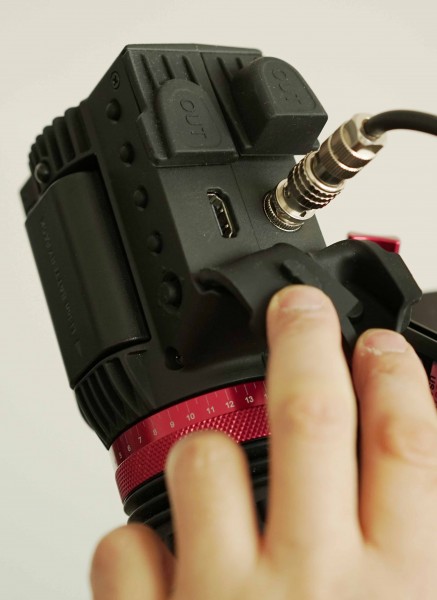
Some people have wondered why these connectors are placed on top, but I find this layout to be better than those of other EVFs which have ports facing downwards or to the rear. On my Kinotehnik LCDVFe the HDMI connections run downwards and they often obstruct my hands getting to the lens for focussing. The outputs can function as a straightforward loop-through allowing you to connect another monitor or recorder down the line if needed. They can also be set to display any of the display functions of the EVF such as waveform or vectorscope which may be useful on larger productions. Better still you can also apply a LUT to the output so that anyone looking at a monitor sees an image closer to the finished grade – good for inspiring confidence in directors and producers. If you are connecting an external recorder like an Atomos Ninja Star downstream you can even record the LUT adjusted image for previewing, or in some cases even as the final product if you have a very fast turnaround web production or news spot.
With any EVF the quality of the screen is only part of the equation – the optics make a huge difference to image. Luckily the optics of the Gratical are first class – sharp and contrasty. There is very little pincushion distortion compared to other EVFs, although I’m sure this is due in part to the smaller image in the field of view. The lens diopter has wide -1 to +4 adjustment range which should cater for most users. With my astigmatism it was totally fine. Zacuto are also going to include their latest anti-fog filter with the Gratical which should prevent finder fogging in the most extreme conditions – this is something I consider essential for an EVF and is missing from most others.
Viewing outside in bright light is no problem thanks to the great screen and the very effective rubber eyepiece that is similar to the one that many users are familiar with in the Z-finder.
Screen burn is a perpetual problem for EVF users – on a bright day the sun’s rays accidentally focussed through the optics can burn the display in a matter of seconds. Several manufacturers have tried to solve this with shutter blinds inside the finder or polarised elements in the optics. Zacuto have a brilliantly simple solution this time – a self closing rubber viewfinder cap that simply flips closed the moment you take your eye away from the finder. There is a special technique that allows you to flip the cap open with the side of your head as you move into use the EVF. Have a look at the video below to see how it works:
At first I didn’t really like it and it kept getting in my way – but after a day or two of use I’ve got used to it and can usually open it with my head easily. If you really don’t like it you can simply pop the flap off and find some other way to cover the EVF when in bright sunlight. I only found the flap to be a pain when putting your camera on the ground and looking down into it without your eye being 100% into the finder – when you do this you need to hold the flap out of the way or find some other way to hold it open, such as tucking it behind part of the EVF mount.
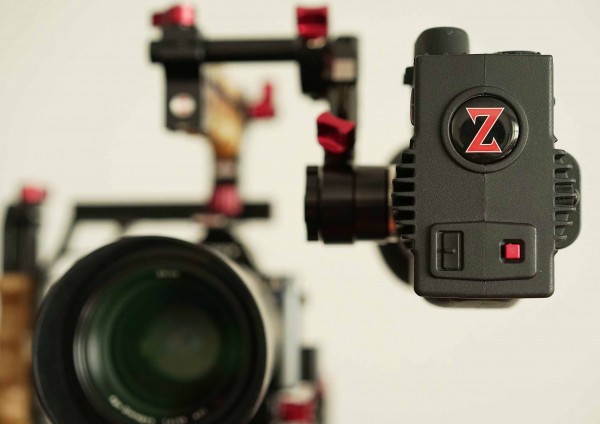
The Gratical HD is housed in a solid magnesium alloy shell that should be good to withstand the rough-and-tumble of professional life. The metal itself is cool to the touch and feels similar to pro-grade camera bodies like Canon’s 1D C or Nikon’s D810. In fact Zacuto are so confident of the robust construction quality that they recently drop tested it and ran it over with a car multiple times. It survived.
The EVF is mounted via an ARRI style rosette on the camera side of the unit. This is best mounted using Zacuto’s own Axis arm to your rig. There is also a 1/4 20 hole on the base should you want to mount the EVF to a Noga arm or other holder – but I wouldn’t recommend this.
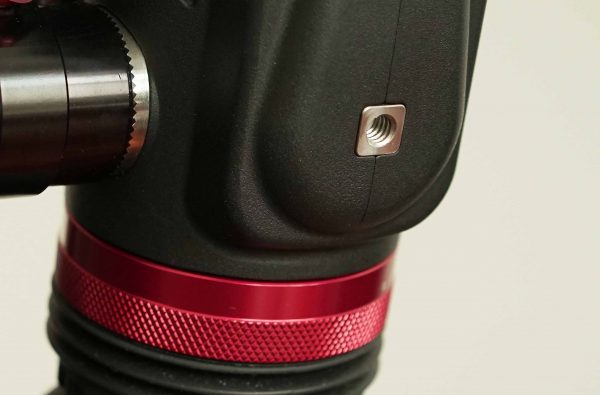
The large red power button is straightforward and hard to miss. The unit is powered using a Canon LPE6 style battery which should provide two to three hours of continuous use in my experience. If you are like me you will still have plenty of these from 5D days, and if not, compatible ones are pretty cheap to pick up. There is also the option to use a battery eliminator box with a power lead that connects to a D-tap – this is a good option for day-long shooting with bigger cameras, but on the downside means there is another cable to route to your camera battery or power distribution plate.
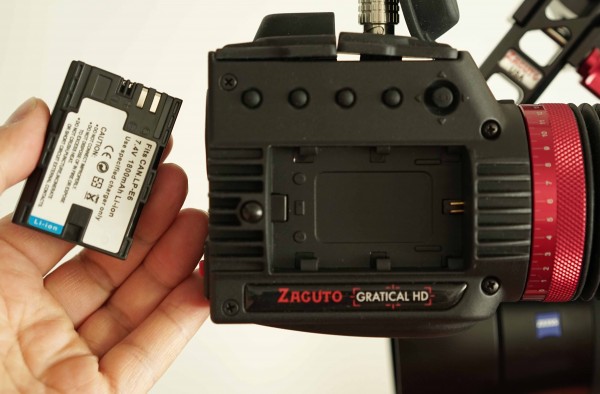
There is no direct barrel connection or lemo for power which is perhaps a bit of an oversight, but not a major one. There is a several second start-up time for the Gratical – which is similar to the original Zacuto EVF. Currently the pre-production model I am testing takes around sixteen seconds to power on but Zacuto tell me they are aiming for a start up time of seven seconds on the finished product.
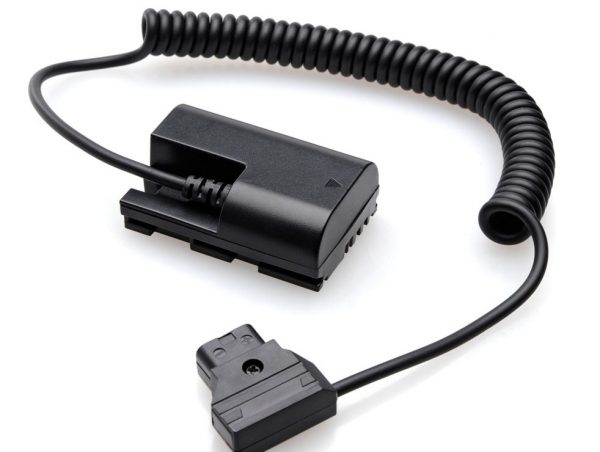
If this bothers you, my solution would be to keep the EVF powered up most of the time when on a shoot, either keeping a few spare batteries in the pocket or using a battery eliminator on longer shoots.
The EVF is also weather resistant and there are no open heat vents that might cause problems in wet conditions. Zacuto tell me that it should also be fine in hot and humid conditions. The electronics have been tested by Zacuto from 0-100 degrees Fahrenheit.
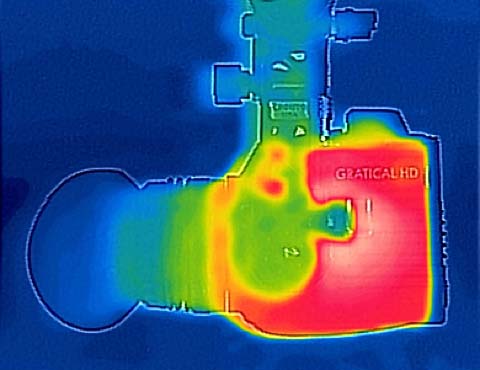
Anamorphic lens shooters are well catered for with the Gratical – there are all the common aspect ratios on offer and the 1280 pixel wide resolution helps greatly when trying to focus.
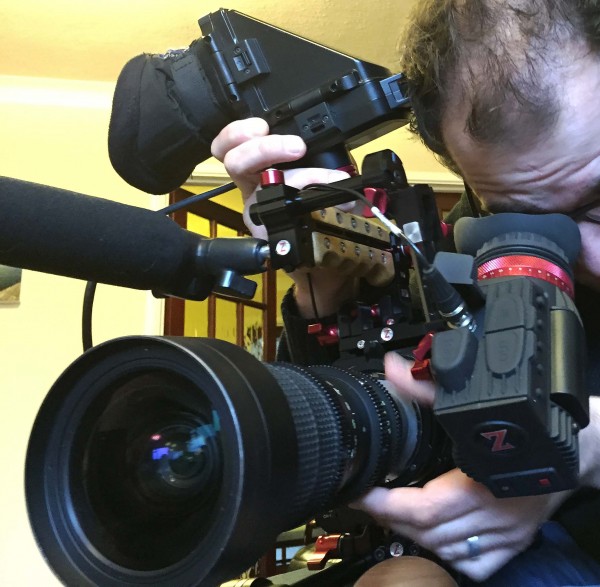
So how does it compare to the other EVFs that I have in the Newsshooter house? At the moment I have the Kinotehnik LCDVFe, Cineroid Retina EVF, Sony’s DVF-L350 for the F5 and 55, as well the built-in EVFs of the Sony FS7, a7S and Panasonic GH4 for comparison. I can categorically say that the image from the Gratical HD beats all of them and is by far the best looking – it is in a different league. I’ve also used the Red Bomb EVF, the Sony DVF-EL100 OLED and the ARRI Amira EVF. I would say I still prefer the Gratical image even to these fine EVFs – the image is just better.
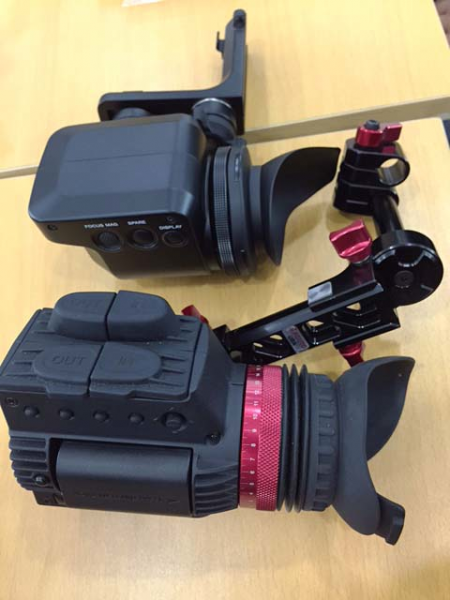
But if you are shooting real world stuff then colour and definition are not good enough reasons alone to buy an EVF – what really matters is that the Gratical actually helps you get better focus. For me this is reason enough to lay down the cash and get one.
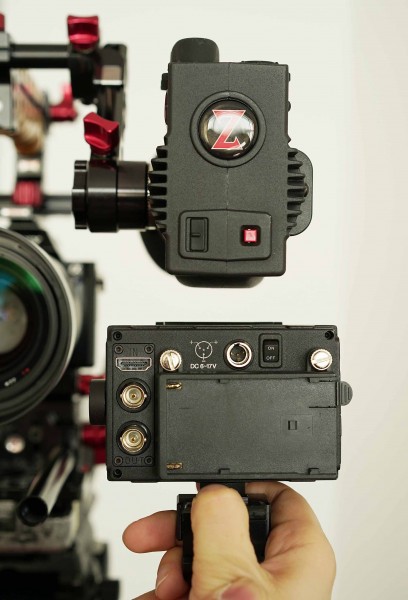
In addition, if you do a lot of handheld work, then the thin upright design of the Gratical is much more useful than the broad rectangular designs of EVFs like the Cineroid, Alphatron or Sony DVF-L350. I like my EVF and my face fairly close to the camera body as my shoulders are not that broad. I have always had problems with my Cineroid and my Sony 350 when shooting on wide angle lenses handheld; the rectangular design makes it hard to keep them out of the frame on a rig that is correctly balanced. With the Gratical’s thinner footprint on Zacuto’s Axis arm, this problem is pretty much eliminated.
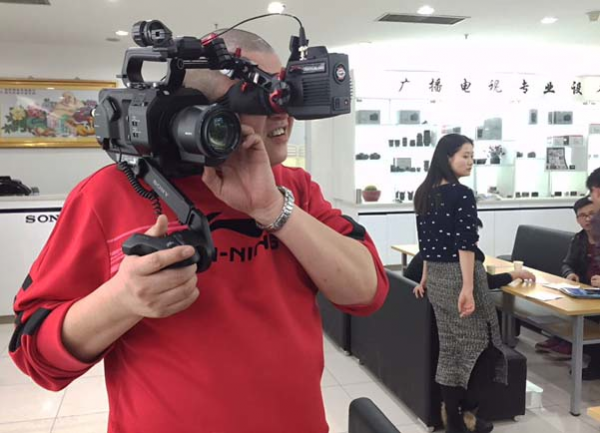
On the downside there are a couple of things that manufacturer’s own EVFs do which are worth knowing. At the moment there is no way the Gratical’s one-to-one magnification function can be engaged by pressing the magnification button on the handgrip of cameras like the C100, C300 and FS7. This is a function I really liked on the FS7 and having to go back to pressing the magnification button on the EVF itself feels like a retrograde step (although I believe Zacuto are working on something that will improve this). The F5/55 and Amira’s EVF magnification function is on the EVF anyway so for these cameras the operation of the Gratical is no different. The magnification itself takes a split second or two longer than most manufacturers’ own EVFs but in practice I didn’t have a problem with this.
The Gratical is a solid one piece unit. Unlike EVFs like the Cineroid, LCDVFe or Sony’s DVF-L350, it does not flip open to reveal the screen inside. This is a feature that I miss because it does make adjusting camera settings easier and can be useful in long interviews where you don’t want to keep your eye to the finder. That said, the annoying thing I find with the flip up variety of EVF is the regularity with which dust gets into the finder and shows up in your view – I haven’t had these dust issues with the Gratical because it’s sealed. (By the way: if you own an FS7, one very nice thing you can do if you use the Gratical is to mount the Sony screen at the rear of the camera to adjust settings and use as a small monitor).
Many cameras only have a single SDI or HDMI output and if you want a clean video feed for external recording then when you use the Gratical none of the camera’s operational info will be visible. Shutter speeds, ISOs and ND settings and even whether you are actually recording will have to checked on the camera’s onboard display. This is common to all third party monitors and EVFs and in most cases nothing can be done about it. Some cameras like Sony’s F5 allow for two SDI outputs – one of which can be ‘clean’, and the other of which set to show some info. This is ideal and hopefully we’ll see more cameras like this in the future.
If you are using an external recorder it might be a good idea to choose one that has a tally function that can output over its HDMI or SDI – then feed the camera signal into the recorder first and then into the Gratical HD. This way you can tell when the recorder is rolling in the viewfinder.
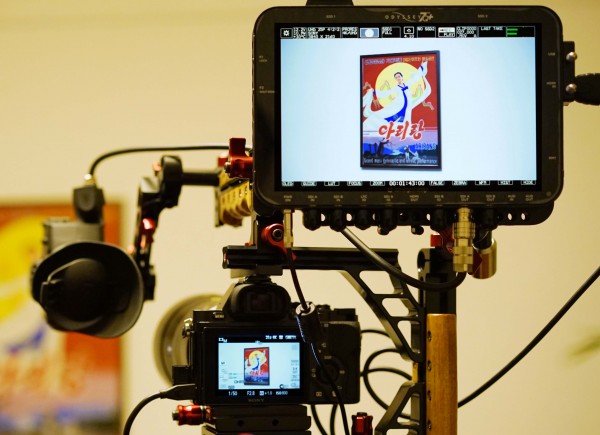
Talking of external recorders, it is also worth noting that if you are working in 4K with a camera with only one output connector then there are some potential issues. The Gratical currently needs to be fed with a 1080HD or lower res image. If you feed it 4K it won’t see it. Some recorders like the Convergent Design Odyssey 7Q+ have outputs that downscale the 4K to 1080 which can then feed the Gratical. Recorders like the Atomos Shogun don’t downscale and so if you are working in 4K then it outputs 4K – this won’t work with the Gratical unless another downscaler box is used in between them. If you are recording 4K internally then this shouldn’t be a problem, as in all likelihood your camera outputs a HD signal for monitoring purposes.
Pricewise the Gratical is expensive, but reasonably priced compared to the RED Bomb OLED ($3900) and Sony’s DVF-EL100 OLED ($4930 at B+H). So far I find it better than either of these. If you have multiple cameras this price starts to look even more reasonable when compared to buying a manufacturers’ own each time. The best thing is that when you upgrade your camera the chances are that you will still be able to use the Gratical HD with the new one.
Shipping of Gratical begins in the next few weeks. You can currently pre-order one from the Zacuto webstore for a promotional price of $2900 US – $900 off the original list price.
Full disclosure: Newsshooter is an affiliate partner of Zacuto – if are going to buy the Gratical and want to support this site please click on this link to buy it.



